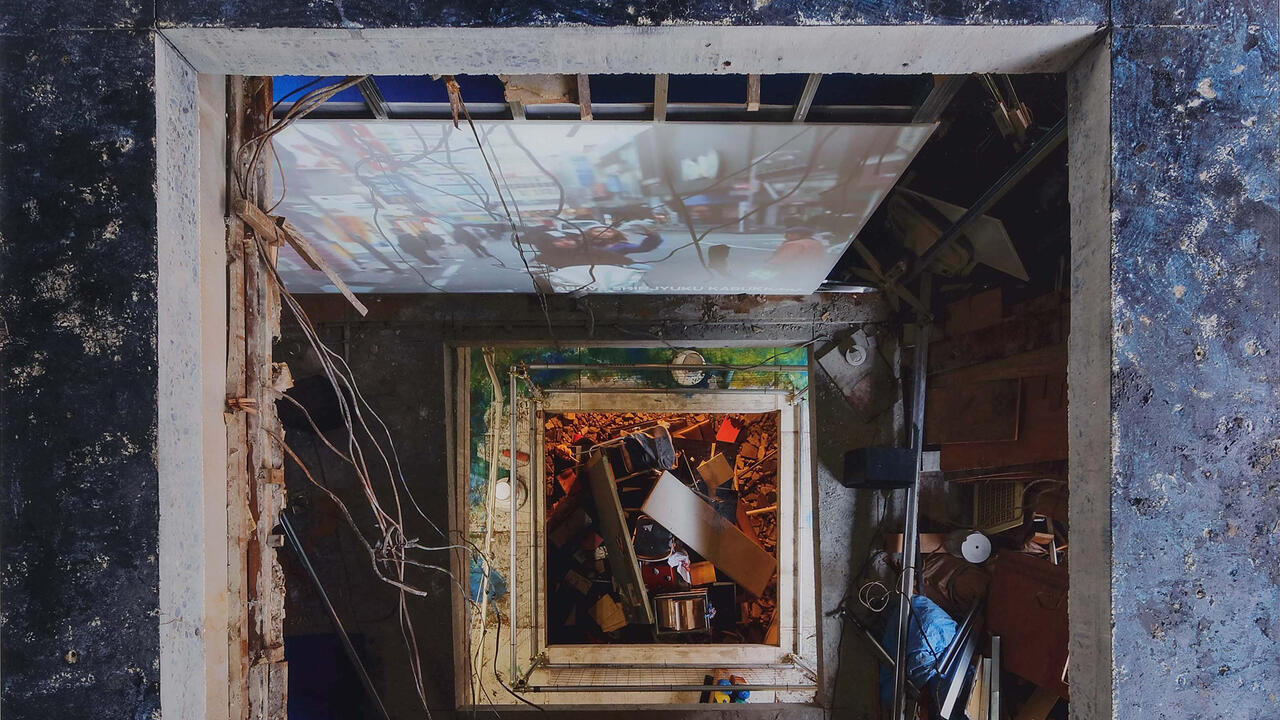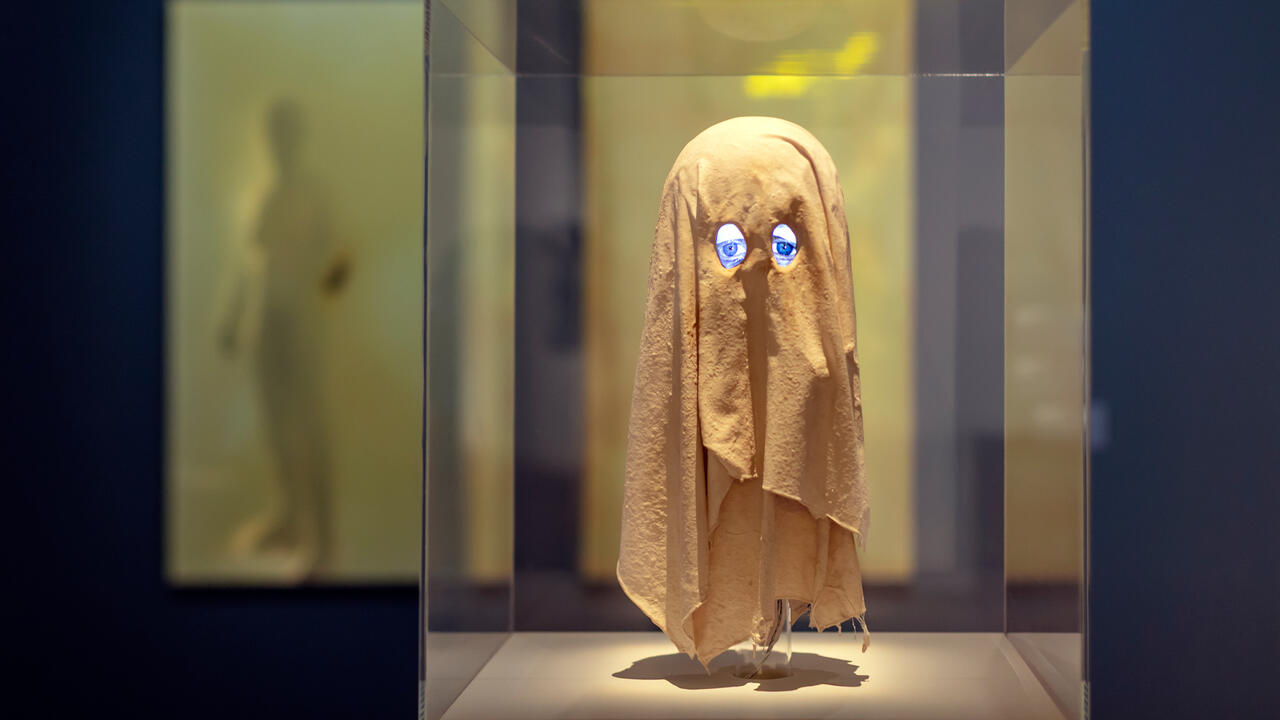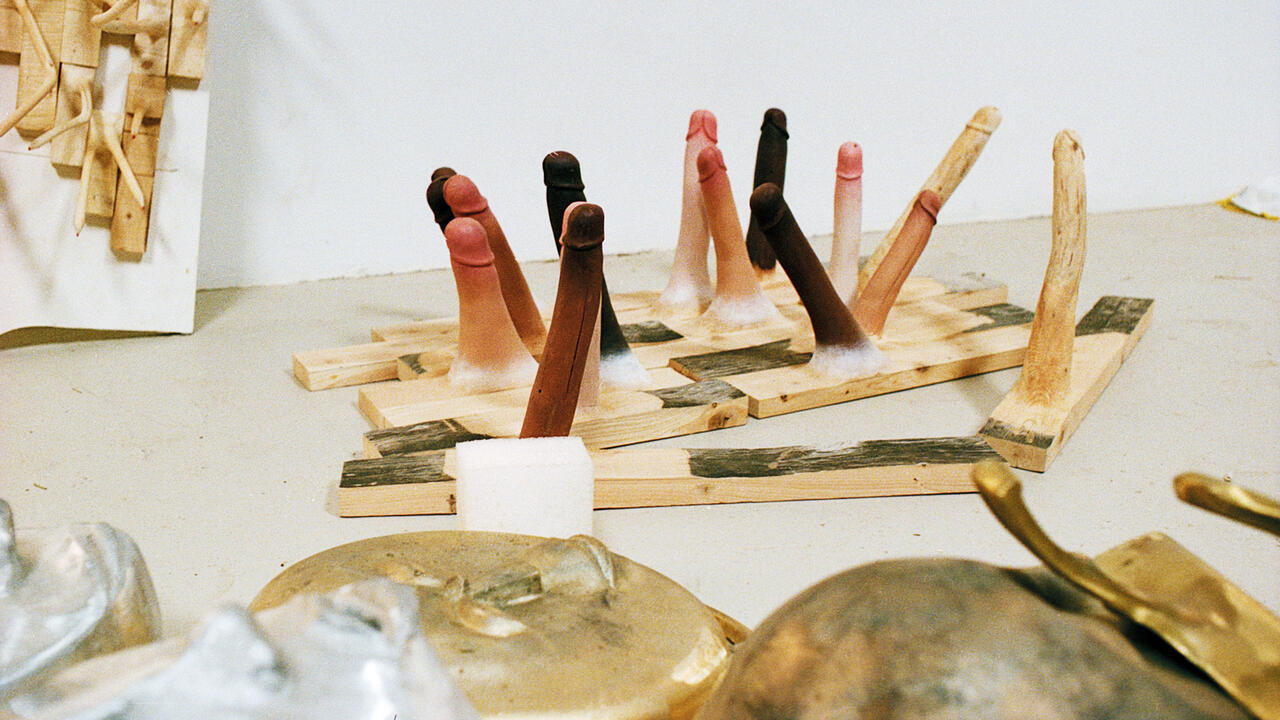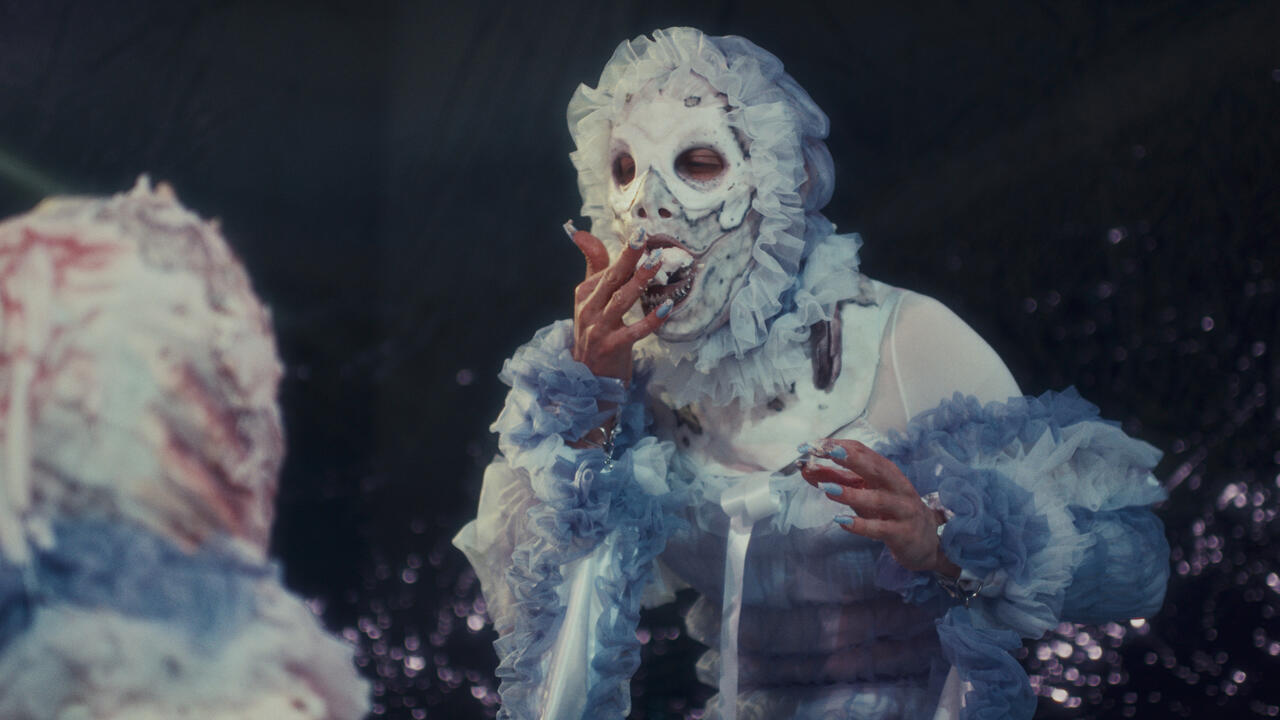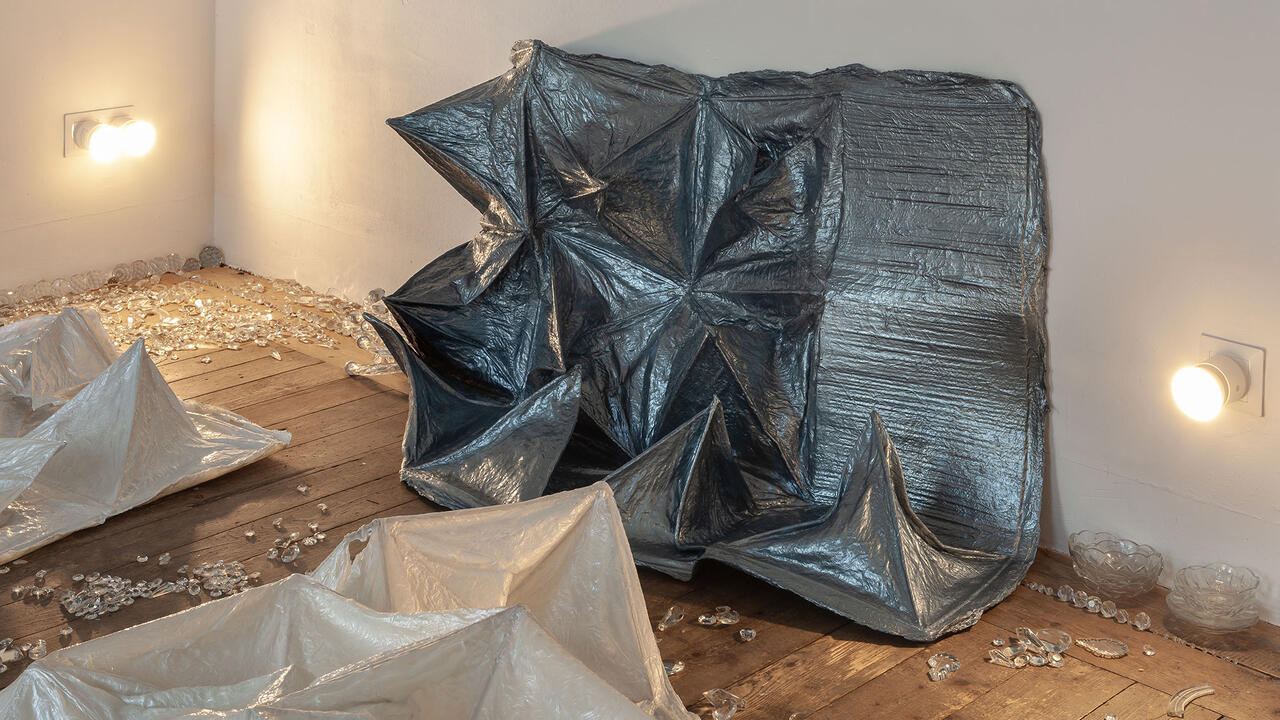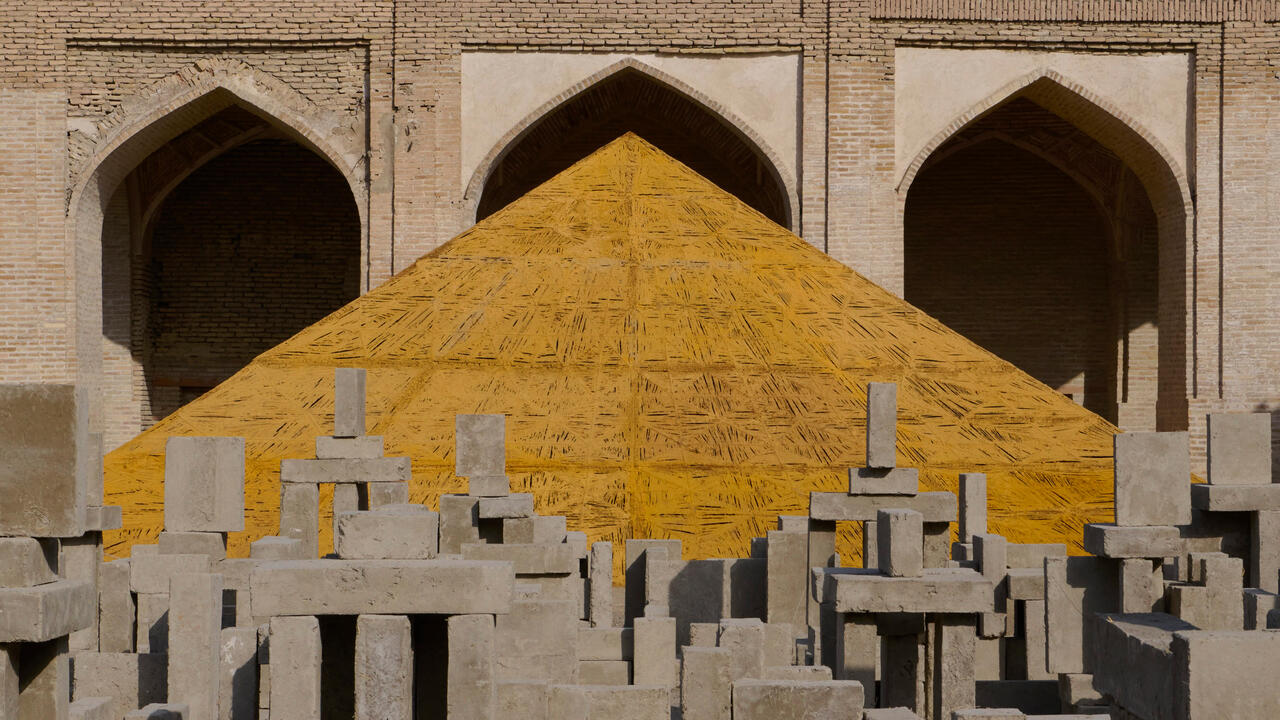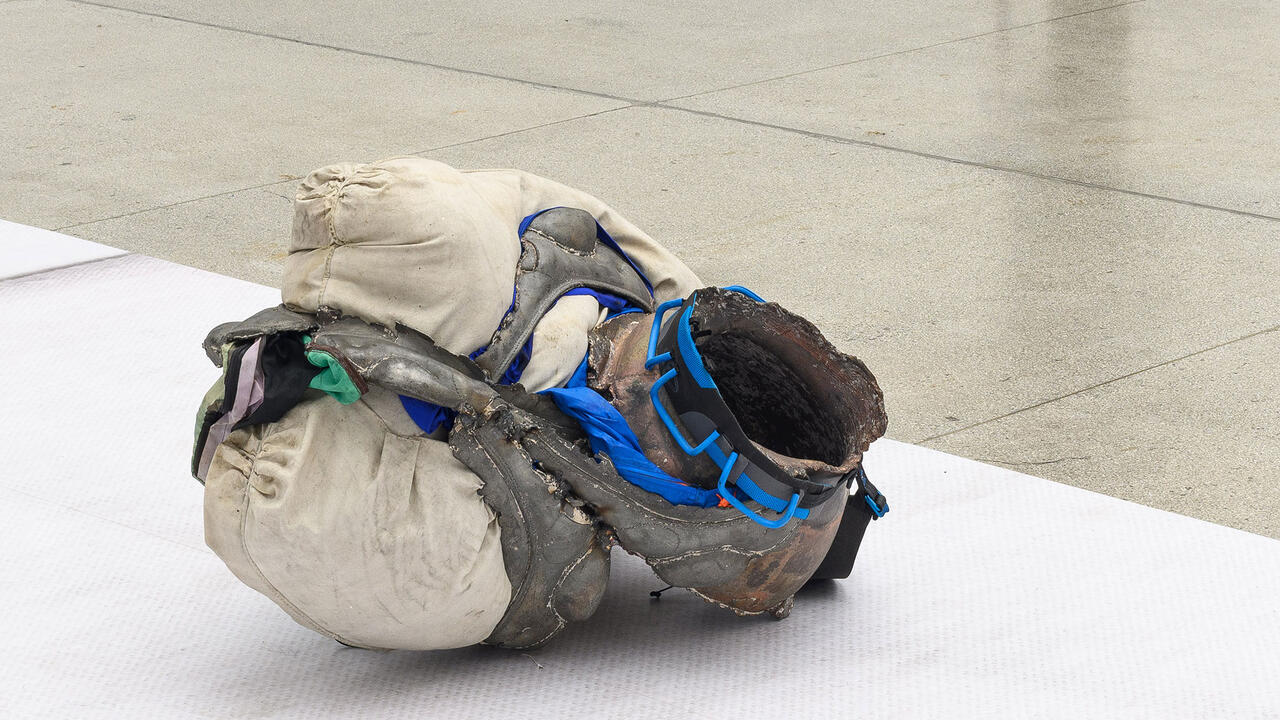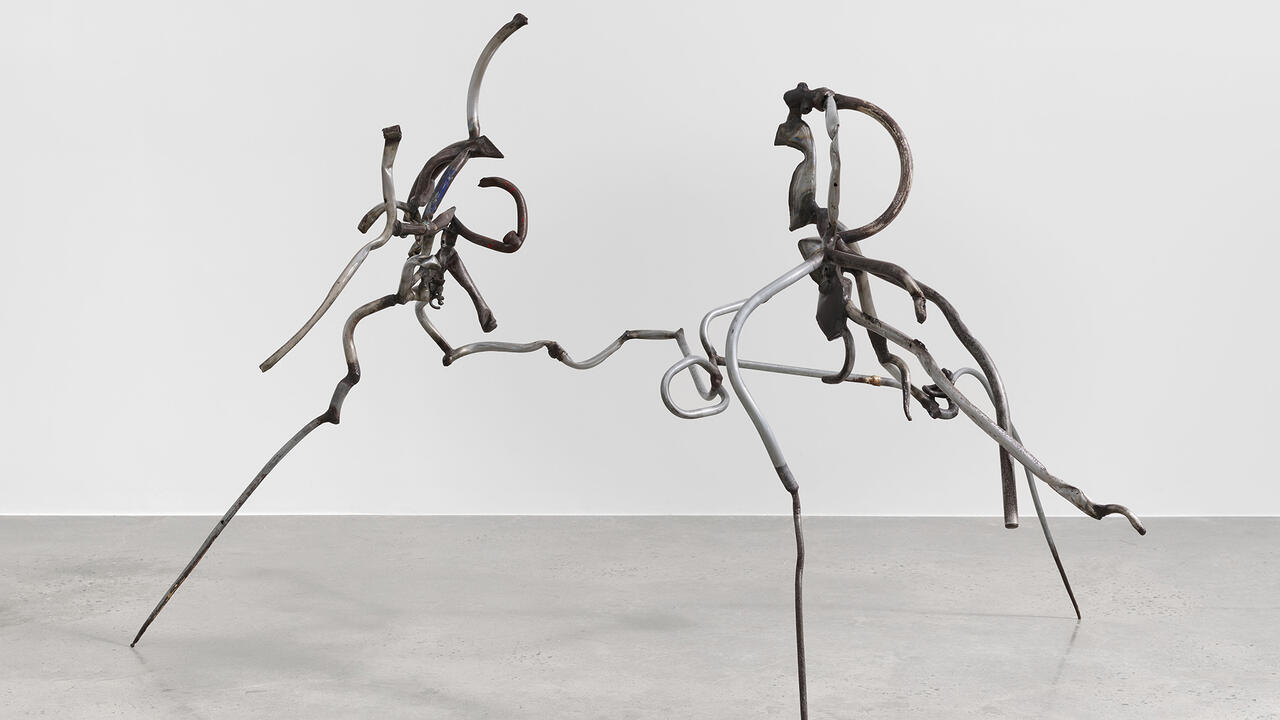Frieze New Writers Pick The Best Shows to See in Vienna
From Katrin Hornek’s post-apocalyptic wasteground to Kristof Santy’s majestic magnifications of the mundane, here are our latest cohort’s top spring exhibitions
From Katrin Hornek’s post-apocalyptic wasteground to Kristof Santy’s majestic magnifications of the mundane, here are our latest cohort’s top spring exhibitions

This Critic’s Guide has been written by the eight participants who took part in this year’s Frieze New Writers programme in Vienna – a free-to-attend intensive three-day course for aspiring art writers led by the frieze editorial team and supported by Phileas – The Austrian Office for Contemporary Art. This initiative is part of Frieze’s wider commitment to amplifying diverse voices within the art world.
Imran Perretta | Secession | 8 March – 9 June

Imran Perretta’s 2019 film the destructors is a lyrical testimony to being young, Muslim and Brown in post-9/11 Britain. For his first solo exhibition in Austria, ‘tears of the fatherland’, Perretta builds a shrine around this project in the dimly lit basement of the Viennese Secession with three new site-specific pieces. The opening installation, Wilhelm’s Scream (2024), is a haunting eight-minute loop composed of cinematic sound effects and orchestral motifs used to score war films. This work expands on the themes of the destructors to explore how the entertainment industry constructs geographies of terror in the Western imagination.
In a separate room, the collective shifts to the individual in the poem trying to disappear. Three pieces of paper float in a tight glass box above burning sticks of Oud incense, a visual metaphor for being trapped in a body burdened by ‘the unbearable weight of its own visibility’ – he lyricizes – in a racist surveillance state. The final piece, an analogue photo of the artist’s computer screen taken a few weeks before the exhibition opening, situates ‘tears of the fatherland’ in the chaos of the present moment, as we witness a new chapter of the endless War on Terror unfolding in Gaza. In the absence of visual stimuli, the tense soundscape and evocative smell engulfing the exhibition create cryptic scenes that viewers must decode to uncover the layers of postcolonial critique hidden in the austere display. – Jelena Jokic-Bornstein
Oliver Ressler | Belvedere 21 | 1 March – 2 June

Oliver Ressler’s ‘Dog Days Bite Back’ combines the stillness of contemplation with the urgency of protest. The exhibition is Belvedere 21’s contribution to the Klima Biennale Wien – a biennial dedicated, in the words of the press release, to finding ‘viable responses to the climate crisis’. This selection of Ressler’s recent films and installations investigates the scope of climate activism. While works such as Climate Feedback Loops (2023) and Coal Kills (2017–19) connect melting ice caps to the mining of protected environments, a glossary of climate-themed definitions, unusual for such spaces and available in QR code or printed format, transforms the exhibition into a site of learning.
The exhibition’s most profound characteristic, however, is the way it sidesteps the noise of protest to highlight more subtle aspects of demonstration. To commune with Ressler’s four mute harlequin mannequins toting loudspeakers and masks (New Model Army, 2016–17) or walk through screenings of softly spoken demonstration organizers (Not Sinking, Swarming, 2021) is to immerse yourself not only in climate activism, but in what it means to embody resistance. Here Ressler succeeds where a lot of art activism fails: in scrutinizing critical issues without succumbing to despair. In Ressler’s words in Not Sinking, Swarming (2021): ‘What is action? […] Either we define [it] or the world’s destroyers will.’ – Noor Ender
Anna Zemankova and Julian Göthe | Sophie Tappeiner | 22 March – 3 May

On the surface, few bodies of work-on-paper could feel as diverse as those of Berlin-based artist Julian Göthe and renowned art brut painter Anna Zemánková. Placed side by side in ‘Find some flowers that look like chairs!’ at Sophie Tappeiner, Göthe’s pencil drawings – framed by thin, black, geometric ropes – form a stark contrast to Zemánková’s colourful flowers. Yet, their oeuvres find unexpected compatible terrain in capturing the exuberance of the natural world.
As the procession of works unfolds on the gallery walls, I find myself captivated by the duo’s visual rhythm. Zemánková’s organic collages alternate with Göthe’s elegant drawings of clouds, swirls and explosions: the latter’s technical precision and clarity contrast with the Czech painter’s playful, alien shapes on now-yellowing paper.
With both artists’ practices focused on how art can attempt to make sense of nature, the works’ silent conversation draws attention to the delicate boundary between order and disorder, ultimately revealing an intimacy between these two seemingly disparate ways of understanding the world. – Simone Molinari
Katrin Hornek | Secession | 8 March – 2 June

After the atomic cloud dissipates, all that remains is the barrenness of the land. Occupying the entire ground floor gallery at Secession, Katrin Hornek’s vast, multi-sensory installation, testing grounds (2024), emanates a stark, menacing sereneness. A landscape of dark rubber flooring emits a chemical stench while pitch-black pools of water reflect a strange circular pattern on the skylight ceiling, later revealed to be a scan of the seabed at an atomic bomb testing site; meanwhile an enveloping soundscape escalates from austere ambient noise to a raging catastrophic drone. Simultaneously, chilling stories, research data and evidence of the mostly invisible aftermath of the usage and testing of nuclear weapons are relayed via texts messages viewers can read on turtle-shaped mobile phones. Through collaboration with artists, scientists and researchers from different fields, Hornek presents a carefully calibrated topography of post-apocalyptic possibility, a sensorial vision of a man-made nightmare. – Punch Viratmalee
Tamuna Sirbiladze | Belvedere 21 | 22 March – 11 August

Just what is it that makes the unpainted ‘gaps’ of raw canvas in a painting so different, so appealing? In ‘Not Cool but Compelling’, Tamuna Sirbiladze’s first institutional solo exhibition, many of the late Georgian artist’s best paintings leave space for the viewer’s imagination. In Breaking the Waves (2015), for example, just a few strokes of oil pastel on otherwise untouched canvas are all she needs to create a beguilingly abstract wave composition. Throughout the show there are plenty of figurative works in which, say, a woman is sick into a sink (Puke, 2005) or even tries to kill herself (Suicide Painting, 2007), but it is above all the punky, hey-ho-let’s-go spirit, independent of the motif, that makes Sirbiladze’s paintings so inspiring. Tragically, in 2016, Sirbiladze died of cancer in her adopted home of Vienna at the age of just 45: an unfinished life, reminiscent of those ‘unfinished’ sections in her paintings. They seem to signify how much more she could have done. – Jens Bülskämper
Kristof Santy | Christine König Galerie | 4 April – 18 May

As recently as 2020, the artist Kristof Santy was working at a print-making factory in a small town in Belgium. Over the past four years, however, he has transitioned from factory floor to gallery wall with paintings that bear the imprint of his former occupation and his early training in graphic drawing.
In ‘Epinal’, his latest solo show at Christine König Galerie, the precision with which Santy paints something as ordinary as living-room wallpaper (Bloemstuk met handspuit, Bouquet with Water Spray, 2024) is exquisite. Throughout the 28 works on display, the artist’s meticulous backdrops – striped wallpaper or chequered bathroom tiles rendered in blockish, graphic colours – set the stage for the ordinary items that populate each frame. Screws, coffee makers, toasters, pencils: humble household objects are magnified on these vast canvases as two-dimensional forms, challenging us to reconsider their significance.
The standout piece, for me, is Lavabo (Washbasin, 2024), which commands attention by playing with perspectives in a towering still life composition of almost two metres tall dedicated to oral hygiene. Hot and cold taps are flanked, on one side, by a bottle of mouthwash promising 24-hour freshness and, on the other, a solitary toothbrush resting against a clear glass tumbler, through which the mosaic-tiled background appears distorted. In this larger-than-life portrayal of a daily ritual, Santy compels us to worship the mundane. – Monica Ray Scott
Angelika Loderer | Belvedere 21 | 6 March – 15 September

Angelika Loderer’s ‘Soil Fictions’ at Belvedere 21 showcases her long-standing artistic practice investigating the socio-ecological co-existence of humans and other living beings. Dotted around the gallery floor is a bewildering array of sculptures of varying size, ambiguous form and diverse materials – metal, wax, plastic and clay, to name a few. Despite its seeming lack of cohesion, however, Loderer’s presentation serves as an invitation to visitors to pause and reflect – the exhibition literature tells us – upon the ‘common ground’ connecting the pieces.
One of the artist’s early works, Parallel (2008) – a video installation juxtaposing footage of the ground with that of a sewer – sits diagonally across from a more recent piece, the sand sculpture Insomnia (2024). Despite their diverse media, these two works illustrate Loderer’s prevailing interest in the material and conceptual potentials of earthly matter. Considered in its entirety – particularly the metal and plaster casts of animals and their habitats, such as Roadkill (Sparrow) (2023) – Loderer’s installation de-amplifies the presence of human bodies and emphasizes the interconnectedness of nature. ‘Soil Fictions’ takes us on an archaeological journey which reminds us that earth is the natural archiver of life. – Tianyu Jiang
Javier Carro Temboury | Pech | 30 March – 27 April

In Javier Carro Temboury’s ‘Café Transversal III’ (2023–ongoing), time is envisioned as an aggregate of stacked crockery, compressing the fractured sprawl of life’s coffee breaks into neat, cake-like slabs. Since its debut at Villa Bellville in Paris, ‘Café Transversal’ has unfolded as an itinerant series which begins with a simple gesture: the artist sets up a table laden with cups and saucers bought at flea markets and invites visitors to enjoy a coffee. Afterwards, he submerges the tabletop in concrete, casting all the used crockery in place. The title refers to the satisfying slicing gesture with which Carro Temboury cuts the cast concrete into narrow bars, exposing a tangle of glyph-like forms created by the sunken ceramic vessels. Simultaneously evoking hasty signatures and fossilized bones, these uncanny shapes cite an exchange of voices and gathered bodies – a nod to the embedded, essential role that others play in an artist’s practice.
While recalling both the automatic-writing experiments of the surrealists and their penchant for creating bizarre assemblages from flea-market finds, the terrazzo slabs of ‘Café Transversal’ do more than make strange abstractions from everyday objects. Sparsely placed across the floor of Pech, their minimal aesthetic and muted earthy tones lean towards the industrial and mass-produced, acknowledging both the leisure and labour of hospitality. – Bryony Dawson
Main image: Angelika Loderer, 'Soil Fictions', Belvedere, 2024. Courtesy: the artist and Bildrecht, Vienna















